Status: Reopened Case (Red Flag)
Last updates:
- 2024: Construction is still going on coupled by selling of new plots and putting up of beacons on illegally claimed land. An area for a fuel station in the degazetted area has been cleared. Political cadres are reported to be selling plots in the forest area near the power line.
- Government is currently evaluating how to proceed, balancing the negative impact on water resources against compensation costs for property owners (who purchased legally)
- 2022: government states that any decision concerning Forest 27 must be logical and legal: government seems to be intentioned to re-gazette Forest 27 while allowing the existence of structures in the area instead of demolishing them; the legality of the construction will be analysed on a case basis as property owners will be invited to present documentation
- 2021: the newly elected UPND government put a halt on real estate and infrastructure development at Forest 27
Concerns:
- Damage to water supply and biodiversity
- Unclear legal instrument used in degazetting the reserve
- The process took place without (or ignoring) due consultation.
- Abuse of function and misuse of public resources, benefitting the elite at the expense of the population
- Solution requires balancing environmental needs with property owners’ rights
- Political unwillingness to prosecute wrongdoers
Context:
Established in 1957, Lusaka East Forest Reserve Number 27 has been classified as a protected area: it serves as groundwater reservoir and feeds the river systems in the Chalimbana sub-catchment, supplying water to communities in Chongwe and the wider Lusaka region, besides hosting great biodiversity and serving as a recreation space for the local population.
Due to its proximity to Lusaka and its natural appeal, the area was designated for a large-scale real estate and infrastructure development that would mainly benefit the Zambian elite, and Forest 27 was degazetted under president Lungu in 2017.
In fact, the forest had already been degazetted once, in 1993, under president Chiluba, to be used for munitions training by the defense forces. However, after 25,500 community members signed a petition, the government re-gazetted the Forest in 1996.
Unfortunately, president Lungu’s attempt was more successful at exploiting the natural public resource for private gains. Three statutory instruments (SI) were put in place to subdivide the reserve for development. SI 62 gave way for Chinese property developer Kingsland and others to bulldoze a great portion of the forest and clear land for 1,100 houses meant for the Zambia Airforce.
An even bigger real estate venture was initiated, paving the way for residential estate, with hotels, a university, hospital, police station, and other facilities. Predictably, the area development was meant to target the high-end market, government officials and politically connected persons. Among those who have obtained land in the forest reserve, records show former Vice President Inonge Wina, former Lands Minister Jean Kapata, former Mines Minister Richard Musukwa, and former Chief Justice Irene Mambilima.
This prompted widespread protests by civil society and the population, especially given Lungu’s so-called pro-poor agenda.
After the 2021 election and the change in government, developments at Forest 27 were put to a halt and the UPND commissioned an evaluation to assess how to handle the delicate issue. On the one hand, property development in the area had damaged the water supply in the area, at the expense of lower income communities. On the other hand, restoring the Forest would entail demolishing existing properties, which had been legally purchased and developed, and compensating owners.
The government is still analyzing the situation. The most recent stance has been an in-between compromise: the intention to re-gazette Forest 27 is still there, but the most viable solution is to allow the existence of already built structures in the area instead of demolishing them.
Moreover, as it was found that property owners had proceeded with construction works even after the order to halt, property owners have been invited to submit relevant documentation to prove the legality of the purchase and development of property in the reserve. The Ministry of Local Government and Rural Development also advised people to stop buying land in Forest 27 and appealed to the local authority to stop approving any building plan in this area: “anyone who is buying land now from Forest 27 is doing it at his or her own risk”.
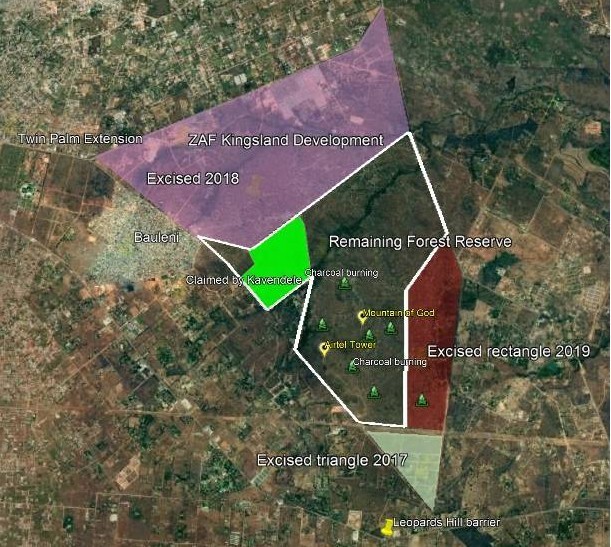
Waving the Red Flag:
Developments at Forest 27 represents a delicate and highly political issue. While the environmental impact of such development is unquestioned, the public’s purchase and development of property occurred in all legality and thus requires a carefully crafted solution.
This notwithstanding, there are significant gaps in the inception of this project. “We need to get to the root of the matter, where it began from, we need to look at the policy that was used by the Commissioner of Lands to allocate plots in the forest. How was the place degazetted, was it as Act that was involved?” (Mr Chanda, NCP).
There are clear signs of abuse of function and misuse of public resources in the degazetting of Forest 27 by president Lungu’s administration; moreover, it can be presumed that the process took place without (or ignoring) due consultation.
However, the issue transcends party’s affiliation, as the list of people benefitting from the property deals includes also members of the UPND and other parties. Indeed, there are significant issues concerning the allocation of land and property to politically exposed or connected persons that should be investigated. However, there are also doubts cast on the extent to which these cases will be investigated and prosecuted.
TI-Z publications:
- Forest 27 Documentary (youtube.com)
- TI-Z CALLS ON THE DEPUTY CHIEF JUSTICE TO CONSTITUTE A TRIBUNAL THAT WILL HELP PUT THE FOREST 27 ISSUE TO BED – Transparency International Zambia (tizambia.org.zm)
External references:
- Zambia : Forest 27 controversy (lusakatimes.com)
- DEGAZETTING FOREST 27 IS AN ENVIRONMENTAL DISASTER! – Lusaka Star
- Zambia : Decisions on Forest 27 to be legal and logical – Anthony Bwalya (lusakatimes.com)
- Cabinet to table re-gazettion of Forest 27 – Zambia: News Diggers!
- Zambia : Government is still studying issues surrounding Forest 27 (lusakatimes.com)
- NCP WANTS ANSWERS ON FOREST 27 DE-GAZETTING – Daily Nation (dailynationzambia.com)
- Zambia : Forest 27 saga takes a new twist (lusakatimes.com)
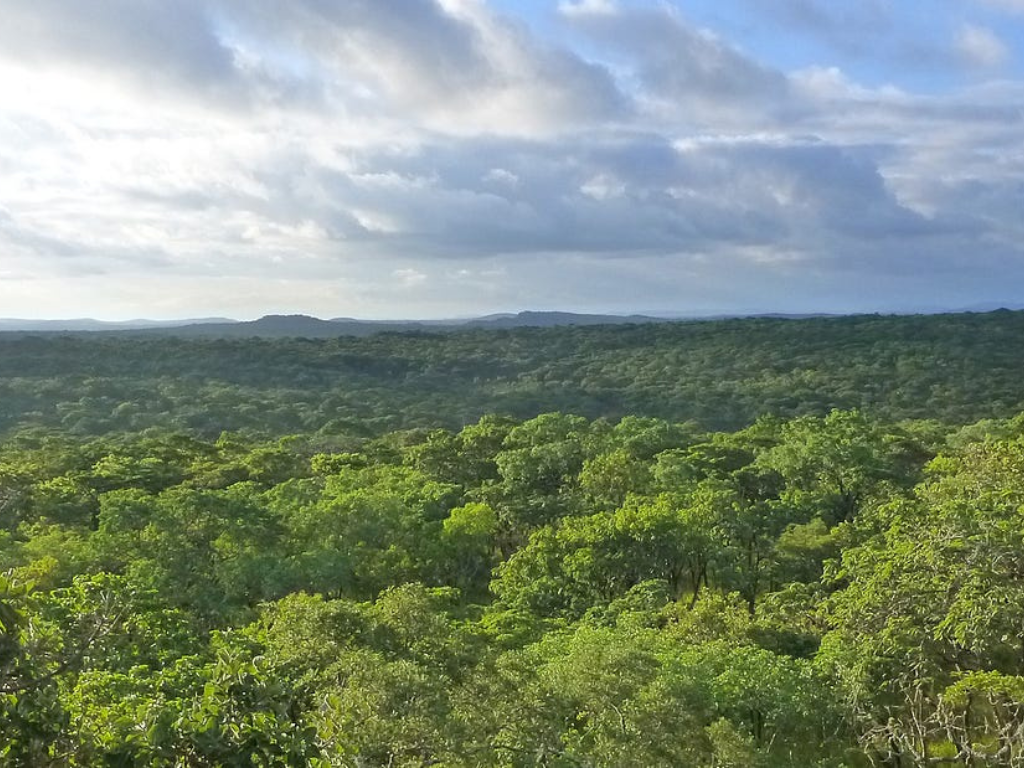
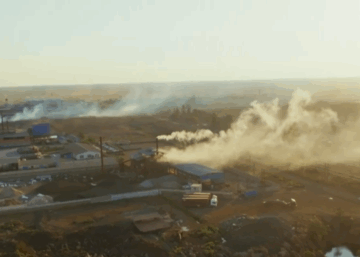
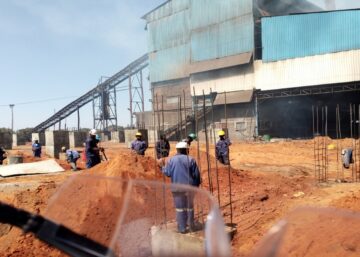
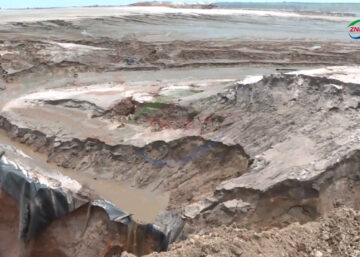





28 June 2024, 09:22
Great to keep it in the Public Eye. Just a quick correction. First de-gazetting took place in 1983 under President Kaunda, then re-gazetted in 1996 by President Chiluba.
On the map, a large part of land that of 270 hectare, being claimed (originally by Cessena) by ASTRO holdings and Mwenda, with re-newed title deeds in 2019 is not shown.
Further development still taking place, selling of plots, large scale construction, demarcating of plots by cadres near the power lines in what is still officially FR, opening of new roads in the Kingsland / ZAF area up to now relatively un-touched.